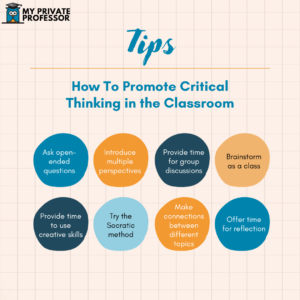When you hear the word ‘myth,’ maybe you think about ancient times. After all, the (Merriam-Webster) definition of ‘myth’ describes a story based on “historical events.” But really, myths have as much of a presence today as they did in the Minoan civilization of Crete.
As humans, we love answers. We love meaning. And we love purpose. We innately don’t like the unknown—and this is a fact!
Research shows that uncertainty disrupts many of our habitual, automatic mental processes, and can even spur panic attacks. Indeed, from a young age, we respond to uncertainty by automatically coming up with potential explanations. In the face of the unknown, then, we have very strong reactions, and ultimately try to identify some certainty.
When we have no answers, myths help us navigate this discomfort.
While some myths are pretty harmless (i.e., “An apple a day keeps the doctor away”), others can significantly impact your life.
But if you’re so inclined, you can learn to identify fact from fiction. And as a result, you can more critically think through your decisions and take control over your life.
Myth: left-brain, right-brain dominance
As humans, we have this inclination to identify what are known as schemas. Schemas describe certain things that “go with” other things. In a few words, they’re simply representations that organize information. For instance, when you imagine Thanksgiving, what do you think of?
Maybe you’re visualizing the specific foods you eat, the people you’re with, and the feelings you have.
This is an example of a schema—your schema of Thanksgiving.
We like schemas for a simple reason. They make it easier for us to process all of the information we hold and come into contact with on any given day. They’re shortcuts. And we love shortcuts.
We can also hold self-schemas, which are mental models of how we expect ourselves to think, feel, and/or act in a given setting.
For instance, consider these two environments: a) a refined tea party with your grandmother in a lavish townhouse and b) your bestie’s chill backyard. In these two situations, you’re most likely not going to be exhibiting the same demeanor.
One common example of a self-schema is the way in which people tend to categorize themselves as right- or left-brained. Accordingly, a left-brained person is more apt to be skilled in the logical, rational, and calculational, and a right-brained person will do better at the artistic, creative, and spontaneous.
This is actually known as the “left-brain, right-brain dominance theory.”
However, as I’ve (and maybe you’ve) learned, a theory, by definition, is supported by evidence and is a concept devised to back up what’s already backed by data. And seemingly, there is no evidence that suggests that people tend to be more “left-brained” or “right-brained.”
There is, however, evidence that this theory is bogus.
For example, a two-year study by University of Utah neuroscientists (who conducted analyses of brain imaging) found no evidence for the “left-brained” or “right-brained” personality types. They acknowledged that while some functions occur in the different sides of the brain, people don’t tend to have a stronger left- or right-sided brain network.
Something that may explain why we strongly cling to theories such as this one is what’s called the Barnum Effect. This phenomenon describes the common tendency for people to believe descriptions about themselves, even though these descriptions could apply to anyone.
As such, people who work with pseudoscience (i.e. horoscope readers) can exploit individuals by using this effect to their advantage. Since we, as humans, innately seek the most efficient routes, we tend to look for quick answers about ourselves. This may be horoscopes, fortunes, or palm readers. And this desire can obviously lead us to spend more money and seek out these opportunities more often. Additionally, we may even find ourselves basing major life decisions on the results of something like a palm reading.
In school, this can majorly affect students. Time and time again, students see and hear the oh-so common stereotype in society: that boys are logical, and girls are artistic. And society continually pressures us to conform to this stereotype and stay in our boxes. But the science is here, confirming that we’re not born with brain more suited to do one or the other.
Contrastingly, social norms and pressures lead us to believe this theory.
Empowering students to understand that, regardless of their gender, they can pursue any field, can help close gender gaps. This, in turn, can yield more innovation and creativity in any given sector.
Myth: the Mozart effect
This one is truly fake news at its finest.
The study
In 1993, psychologist Francis Rauscher conducted an experiment. She played Mozart for ten minutes to thirty-six college students. Afterwards, she gave the students a spatial reasoning test. She also asked them to take this test after a) ten minutes of silence, and b) ten minutes of someone speaking in a monotone voice.
Rauscher found that after listening to Mozart, students scored significantly higher on the spatial temporal task. She emphasized that her test solely measured this specific kind of spatial intelligence, and that the gain didn’t last very long (ten to fifteen minutes).
In a paper she posted in the journal Nature, Rauscher reported her findings.
Shortly after, the Associated Press published it everywhere, and soon, the findings were all over the internet, according to NPR.
The aftermath
Reportedly, everything was great at first. But then, reporters and journalists began misquoting Rauscher and distorting her findings. Specifically, people were generalizing the results in relation to children. They said that children who listened to classical music from a young age would do better on the SAT and intelligence tests.
In the ensuing years, researchers did find that there was some correlation between listening to music and improved studying—but this had nothing to do with Mozart.
Essentially, they found that listening to any type of music (that you find enjoyable) can help improve focus and thus productivity. This is because music can improve mood, which in turn can impact learning outcomes. And also, research has found that music activates the same regions in your brain activated by activities you enjoy; as a result, listening to music can help you cultivate more motivation.
While the Mozart effect isn’t real, music still plays a valuable role in education. For instance, it promotes teamwork and collaboration, encourages cultural awareness, and helps with reading comprehension. In addition, music therapy can be valuable for some students, such as those with ADHD.
The bottom line is that you may find that music boosts your focus—but it doesn’t have to be Mozart, or classical music for that matter.
Myth: more homework = more learning 
Did you ever have those nights where, tasked with a buttload of homework, you tried to finish everything as quickly as possible? And maybe, in doing this, you didn’t really take in all that much information? Sounds plausible.
One notion some have taken as an indisputable truth is that the more homework, the better.
However, there isn’t much evidence to back this up.
In fact, according to the Journal of Educational Psychology, students who completed more than ninety to one-hundred minutes of homework each night performed worse on tests than those who did less than ninety minutes of homework.
Additionally, studies show that increased homework at the elementary level actually has a negative impact on students’ test scores.
The organization for Economic Cooperation and Development found that after about four hours of homework weekly, the additional time invested in homework has negligible effect on performance.
Maybe, at a certain point, the stress outweighs the benefits of homework.
A 2013 study, indeed, found that this could be true. The study surveyed more than 4,300 students from 10 high-performing public and private high schools in upper-middle-class California communities. It found that excessive homework is associated with high stress levels, physical health problems, and lack of balance in children’s lives.
Confirming this finding, a Stanford University study concluded that students who felt that they spent too much time on homework experienced stress and physical sickness that could be connected with anxiety.
Currently, it seems that, considering the above research, students are getting too much homework.
The National Education Association and the National Parent Teacher Association – recommend that students spend ten minutes per grade level per night on homework (first graders would spend ten minutes, fifth graders would spend fifty minutes, etc.). But the American Journal of Family Therapy shows that students are getting much more than this.
By giving students excessive amounts of homework, we’re pretty much putting them at a disadvantage.
Myth: multitasking works
In our hyperproductive society, multitasking has come to seem like a superpower. But in reality, we can’t effectively do multiple things at one. You can try, but the research says that you’re much more likely to make errors than if you were to monotask.
So maybe while doing the Wordle amid cooking breakfast, you cook your eggs a little more than planned. Or maybe, as you proofread your paper while catching up on the latest of Vanderpump Rules, you miss a few typos.
In school, multitasking can cause students to get distracted and perform poorly on tests or make errors on assignments. One study found that students who used Facebook while studying had a lower grade-point average than students who didn’t use Facebook while studying.
Researchers at the University of Connecticut conducted a survey and found that students who multitasked while doing homework had to study for longer, and that those who frequently multitasked in class had lower grades than their peers who multitasked less often.
Evidently, those students who had to study for longer periods of time had less time to get quality sleep. And as we know, sleep quality is directly related to academic performance.
As technology seeps its way more and more into our lives, we’ve become accustomed to multitasking. And seemingly, we’ve normalized it. However, it’s important to note that these increasing technological developments and the way in which they promote multitasking have actually led to a significant, collective decline in focus.
It’s a cycle: we multitask more, and then our ability to focus gets worse. And as our ability to focus weakens, we multitask more and more.
Understanding how multitasking can impair academic performance is a key first step in making improvements in this area.
Myth: boys are better than girls at math
Earlier, I described the theory of the left- vs. right-brain dominance. Remember schemas? Those “models” that we hold which contain representations of information about the world and ourselves?
One example of a schema is the societal notion that on average, boys are better at math than girls. However, research would have you know that girls’ and boys’ mathematical abilities aren’t actually significantly different on average.
Neuroscientists at Carnegie Mellon University looked at young boys’ and girls’ brains, finding no difference in mathematical ability or brain function
Additionally, research looked at the test performance data from 500 boys and girls, confirming that in early quantitative and mathematical ability, there wasn’t a significant difference between genders. This suggests that during early childhood, boys and girls are equally equipped to perform mathematical tasks.
So why then, is there a significant gender gap when it comes to who pursues math (and STEM in general) in higher education and beyond? Well, it could be that persistent social norms have lowered girls’ confidence in math.
And in fact, research shows that, despite having high grades in math, girls have significantly lower confidence about their abilities in math than boys. Evidently, a lack of confidence can certainly lead students to avoid pursuing math in higher education and beyond.
It seems, from a young age, boys are encouraged to seek challenges, whereas girls are encouraged to seek perfection. The result here is concerning. That is, when boys run into difficulty or failure in math, they tend to bounce back relatively quickly, but girls take failure more personally. As a result, they may very well avoid math in future instances.
Additionally, we live in a culture that promotes STEM as a masculine field, and one in which girls will struggle should they enter.
In fact, a 2021 study found that as early as six years old, children start forming the idea that STEM is more fit for boys than girls.
Addressing this false notion can encourage more women to enter the STEM field. In turn, this could narrow the gender gap, and in turn, bring more perspectives to the table.
Myth: extroverts are ideal leaders in group projects
I often read about the importance of celebrating the fact that each and every student is unique, with different strengths and weaknesses. But too commonly, cultural and societal norms hinder our ability to do this.
For instance, a common notion is that the best leaders are those who are loud, energetic, dominant, and outgoing. But is this really true?
Although we’ve seemingly come to associate leadership with extroversion, research shows that often, introverts can be great leaders. And sometimes, they might even be the better choice.
Extroverts bring energy and assertiveness to the table. But often, introverts can bring about better cohesiveness and innovation in a group. Why? Because introverts tend to be more comfortable with hearing several perspectives before making a decision.
Harvard Business Review explains that on the contrary, extroverts tend to be more resistant to considering others’ visions and viewpoints.
However, both extroverted students and introverted students can be great leaders—but they are most effective in certain situations. That is, introverted leaders tend to be more effective when they are leading proactive members. Meanwhile, extroverted leaders tend to be most effective when leading passive members.
A 2011 study found that the reasons for this is that introverted leaders have difficulty motivating and/or engaging with passive members, and extroverted leaders get into frequent conflict with proactive team members.
The bottom line is that all students can be good leaders. Furthermore, the notion that we’ve created and perpetuated, that extroverted students are better leaders, is harmful. Specifically, this false notion dissuades some students from stepping up and trying themselves out in leadership roles. This, in turn, hinders these students from exploring different interests and fields.
Final thoughts
Myths, at their core, are a form of advertising. But you’re still in charge of what you’re going to buy! You are not Wikipedia. Which means that nothing—including myths—can force you to take in and accept just any information.
By taking simple steps to debunk myths that might affect you, you sharpen your critical thinking skills and reestablish your place in the driver’s seat.







